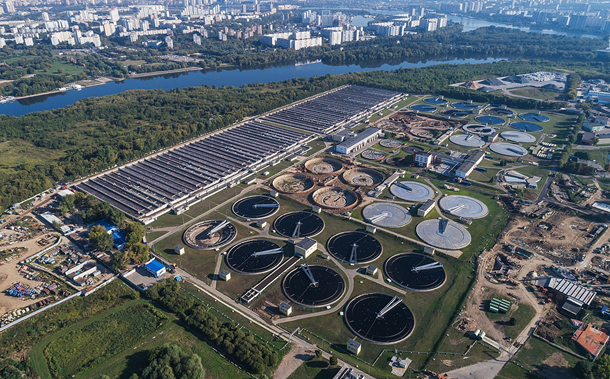Mechanical Analysis of Subgrades of Road Pavements in Life Cycle Assessment
Downloads
Doi: 10.28991/CEJ-2022-08-07-012
Full Text: PDF
[2] Andrade, C.E.S. (2016). Assessment of carbon dioxide emission and energy use in the life cycle of passenger metro-railway systems: Application on Line 4 of the Rio de Janeiro Metro. PhD Thesis, Postgraduate Program in Transport Engineering, Federal University of Rio de Janeiro, Rio de Janeiro, Brazil. (In Portuguese). Available online: https://www.pet.coppe.ufrj.br/images/documentos/teses/Tese_Carlos__Andrade_08-07-2016.pdf (accessed on March 2022).
[3] Gouveia, B. G., Donato, M., & Da Silva, M. A. V. (2022). Life Cycle Assessment in Road Pavement Infrastructures: A Review. Civil Engineering Journal, 8(6), 1304–1315. doi:10.28991/cej-2022-08-06-015.
[4] Coenen, J., Bager, S., Meyfroidt, P., Newig, J., & Challies, E. (2021). Environmental Governance of China's Belt and Road Initiative. Environmental Policy and Governance, 31(1), 3–17. doi:10.1002/eet.1901.
[5] Crawford, R. H. (2008). Validation of a hybrid life-cycle inventory analysis method. Journal of Environmental Management, 88(3), 496–506. doi:10.1016/j.jenvman.2007.03.024.
[6] do Nascimento, F.A.C. (2021). Some operational and environmental aspects incorporated into an airport pavement management system: A methodological contribution in the light of life cycle analysis. PhD Thesis, Federal University of Rio de Janeiro, Rio de Janeiro, Brazil. (In Portuguese). Available online: https://www.pet.coppe.ufrj.br/images/documentos/teses/2021/Tese_-_Filipe_Almeida_Correa_do_Nascimento_-_Marcelino.pdf (accessed on April 2022).
[7] Azarijafari, H., Yahia, A., & Ben Amor, M. (2016). Life cycle assessment of pavements: Reviewing research challenges and opportunities. Journal of Cleaner Production, 112, 2187–2197. doi:10.1016/j.jclepro.2015.09.080.
[8] IPCC (Intergovernmental Panel on climate Change) (2014). Climate Change 2014: Synthesis Report. Contribution of Working Groups I, II and III to the Fifth Assessment Report of the Intergovernmental Panel on Climate Change. IPCC, Geneva, Switzerland. Available online: https://epic.awi.de/id/eprint/37530/ (accessed on April 2022).
[9] Silva, B. H. A. E. (2009). Mechanical analysis of a road pavement subjected to the oscillation of the water table simulated in a physical model of true magnitude. PhD Thesis, Postgraduate Program in Transport Engineering, Federal University of Rio de Janeiro, Rio de Janeiro, Brazil. (In Portuguese).
[10] Franco, F.A.C.P., Ubaldo, M.O., Fritzen, M.A., Lima, C.D.A., & Motta, L.M.G. (2019). Reinforcement design analysis using the ME method of national design MeDiNa. 33th ANPET - Transport Research and Teaching Congress, 10-14 November, 2019, Balneário Camboriú, Brazil.
[11] Nascimento, F., Gouveia, B., Dias, F., Ribeiro, F., & Silva, M. A. (2020). A method to select a road pavement structure with life cycle assessment. Journal of Cleaner Production, 271. doi:10.1016/j.jclepro.2020.122210.
[12] Gouveia, B. G., Donato, M., Dias, F. C., Medeiros, A. S. & Silva, M. A. V. (2021). Evaluation of the effect of subgrade moisture in the life cycle analysis of road pavements. 35th ANPET - Transport Research and Teaching Congress, 16-18 November, 2021, Virtual Conference. (In Portuguese).
[13] Li, J., Xiao, F., Zhang, L., & Amirkhanian, S. N. (2019). Life cycle assessment and life cycle cost analysis of recycled solid waste materials in highway pavement: A review. Journal of Cleaner Production, 233, 1182–1206. doi:10.1016/j.jclepro.2019.06.061.
[14] ISO 14040. (2006). Environmental management-Life cycle assessment-Principles and framework. International Organization for Standardization, Geneva, Switzerland.
[15] ISO 14044. (2006). Environmental Management-Life Cycle Assessment-Requirements and Guidelines. International Organization for Standardization, Geneva, Switzerland.
[16] ISO/TR 14047. (2012). Environmental management- Life cycle assessment-Illustrative examples on how to apply ISO 14044 to impact assessment situations. International Organization for Standardization, Geneva, Switzerland.
[17] ISO/TR 14049. (2012). Environmental management–Life cycle assess ment–Illustrative examples on how to apply ISO 14044 to goal and scope definition and inventory analysis. International Organization for Standardization, Geneva, Switzerland.
[18] ISO/TS 14071. (2014). Environmental management-Life cycle assessment-Critical review processes and reviewer competencies: Additional requirements and guidelines to ISO 14044:2006. International Organization for Standardization, Geneva, Switzerland.
[19] Yu, B., & Lu, Q. (2014). Estimation of albedo effect in pavement life cycle assessment. Journal of Cleaner Production, 64, 306–309. doi:10.1016/j.jclepro.2013.07.034.
[20] Araújo, J. P. C., Oliveira, J. R. M., & Silva, H. M. R. D. (2014). The importance of the use phase on the LCA of environmentally friendly solutions for asphalt road pavements. Transportation Research Part D: Transport and Environment, 32, 97–110. doi:10.1016/j.trd.2014.07.006.
[21] Santos, J., Ferreira, A., & Flintsch, G. (2015). A life cycle assessment model for pavement management: Methodology and computational framework. International Journal of Pavement Engineering, 16(3), 268–286. doi:10.1080/10298436.2014.942861.
[22] Santos, J., Bryce, J., Flintsch, G., Ferreira, A., & Diefenderfer, B. (2015). A life cycle assessment of in-place recycling and conventional pavement construction and maintenance practices. Structure and Infrastructure Engineering, 11(9), 1199–1217. doi:10.1080/15732479.2014.945095.
[23] Liu, R., Smartz, B. W., & Descheneaux, B. (2015). LCCA and environmental LCA for highway pavement selection in Colorado. International Journal of Sustainable Engineering, 8(2), 102–110. doi:10.1080/19397038.2014.958602.
[24] Mauro, R., & Guerrieri, M. (2016). Comparative life-cycle assessment of conventional (double lane) and non-conventional (turbo and flower) roundabout intersections. Transportation Research Part D: Transport and Environment, 48, 96–111. doi:10.1016/j.trd.2016.08.011.
[25] Chen, F., Zhu, H., Yu, B., & Wang, H. (2016). Environmental burdens of regular and long-term pavement designs: A life cycle view. International Journal of Pavement Engineering, 17(4), 300–313. doi:10.1080/10298436.2014.993189.
[26] Butt, A. A., Birgisson, B., & Kringos, N. (2016). Considering the benefits of asphalt modification using a new technical life cycle assessment framework. Journal of Civil Engineering and Management, 22(5), 597–607. doi:10.3846/13923730.2014.914084.
[27] Chong, D., & Wang, Y. (2017). Impacts of flexible pavement design and management decisions on life cycle energy consumption and carbon footprint. International Journal of Life Cycle Assessment, 22(6), 952–971. doi:10.1007/s11367-016-1202-x.
[28] Dos Santos, J. M. O., Thyagarajan, S., Keijzer, E., Flores, R. F., & Flintsch, G. (2017). Comparison of Life-Cycle Assessment Tools for Road Pavement Infrastructure. Transportation Research Record: Journal of the Transportation Research Board, 2646(1), 28–38. doi:10.3141/2646-04.
[29] Moretti, L., Mandrone, V., D'Andrea, A., & Caro, S. (2017). Comparative "from cradle to gate” life cycle assessments of Hot Mix Asphalt (HMA) materials. Sustainability (Switzerland), 9(3), 400. doi:10.3390/su9030400.
[30] Liu, X., Cui, Q., & Schwartz, C. W. (2018). Introduction of mechanistic-empirical pavement design into pavement carbon footprint analysis. International Journal of Pavement Engineering, 19(9), 763–771. doi:10.1080/10298436.2016.1205748.
[31] Hong, F., & Prozzi, J. A. (2018). Evaluation of recycled asphalt pavement using economic, environmental, and energy metrics based on long-term pavement performance sections. Road Materials and Pavement Design, 19(8), 1816–1831. doi:10.1080/14680629.2017.1348306.
[32] Gulotta, T. M., Mistretta, M., & Praticò, F. G. (2019). A life cycle scenario analysis of different pavement technologies for urban roads. Science of the Total Environment, 673, 585–593. doi:10.1016/j.scitotenv.2019.04.046.
[33] Wang, H., Al-Saadi, I., Lu, P., & Jasim, A. (2020). Quantifying greenhouse gas emission of asphalt pavement preservation at construction and use stages using life-cycle assessment. International Journal of Sustainable Transportation, 14(1), 25–34. doi:10.1080/15568318.2018.1519086.
[34] Cong, L., Guo, G., Yu, M., Yang, F., & Tan, L. (2020). The energy consumption and emission of polyurethane pavement construction based on life cycle assessment. Journal of Cleaner Production, 256. doi:10.1016/j.jclepro.2020.120395.
[35] Vega A, D. L., Santos, J., & Martinez-Arguelles, G. (2022). Life cycle assessment of hot mix asphalt with recycled concrete aggregates for road pavements construction. International Journal of Pavement Engineering, 23(4), 923–936. doi:10.1080/10298436.2020.1778694.
[36] Huang, M., Dong, Q., Ni, F., & Wang, L. (2021). LCA and LCCA based multi-objective optimization of pavement maintenance. Journal of Cleaner Production, 283. doi:10.1016/j.jclepro.2020.124583.
[37] Ma, F., Dong, W., Fu, Z., Wang, R., Huang, Y., & Liu, J. (2021). Life cycle assessment of greenhouse gas emissions from asphalt pavement maintenance: A case study in China. Journal of Cleaner Production, 288, 125595. doi:10.1016/j.jclepro.2020.125595.
[38] Bressi, S., Primavera, M., & Santos, J. (2022). A comparative life cycle assessment study with uncertainty analysis of cement treated base (CTB) pavement layers containing recycled asphalt pavement (RAP) materials. Resources, Conservation and Recycling, 180, 106160. doi:10.1016/j.resconrec.2022.106160.
[39] Salehi, S., Arashpour, M., Kodikara, J., & Guppy, R. (2022). Comparative life cycle assessment of reprocessed plastics and commercial polymer modified asphalts. Journal of Cleaner Production, 337. doi:10.1016/j.jclepro.2022.130464.
[40] CNT (National Transport Confederation). (2017). Road Transport: Why do the pavements of highways in Brazil not last? Brasília, Brazil. (In Portuguese).
[41] Fontes, L.P. (2009). Optimization of the performance of bituminous mixtures with rubber-modified bitumen for pavement rehabilitation. PhD Thesis, University of Minho, Braga, Portugal. (In Portuguese). Available online: https://repositorium.sdum.uminho.pt/handle/1822/9601 (accessed on May 2022).
[42] Franco, F. A. C. P. (2007). Method of mechanistic-empirical design of asphalt pavements - SISPAV. Federal University of Rio de Janeiro, Rio de Janeiro, Brazil. (In Portuguese). Available online: http://www.coc.ufrj.br/es/documents2/doutorado/2007-2/887-filipe-augusto-cinque-de-proenca-franco-doutordo/file (accessed on March 2022).
[43] IS-247. (2021). Studies for the Development of Implementation Projects using the National Dimensioning Method – MeDiNa. National department of Transport infrastructure (DNIT), Brasília, Brazil. (In Portuguese).
[44] Burmister, D. M. (1943). The Theory of Stresses and Displacements in Layered Systems and Applications to the Design of Airport Runways. Proceedings of the 23rd Annual Meeting of the Highway Research Board, 126–148, 27-30 November, 1943, Chicago, United States.
[45] DNIT (national Department of transport Infrastructure. (2006). Paving Guide (3rd Ed). Publication IPR-719, Planning and research direction, general Coordination of Studies and research, Highway Research Institute, Brasília, Brazil. (In Portuguese).
[46] de Medina, J., & da Motta, L.M.G. (2015). Floor Mechanics (3rd Ed.). Interciencia. Rio de Janeiro, Brazil. (In Portuguese).
[47] Seed, H. B., Mitry, F. G., Monismith, C. L., & Chan, C. K. (1967). Prediction of flexible pavement deflections from laboratory repeated-load tests. NCHRP Report 35, Transportation Research Board, Washington, United States.
[48] Hicks, R. G. (1970). Factors influencing the resilient properties of granular materials. PhD Thesis, University of California, Berkeley, United States.
[49] Barksdale, R. D., & Hicks, R. G. (1973). Material Characterization and Layered Theory for Use in Fatigue Analyses. Transportation Research Board, Washington, United States. Available online: https://onlinepubs.trb.org/Onlinepubs/sr/sr140/140-002.pdf (accessed on June 2022).
[50] Allen, J. J., & Thompson, M. R. (1974). Resilient response of granular materials subjected to time-dependent lateral stresses. Transportation Research Board, Washington, United States. Available online: http://onlinepubs.trb.org/Onlinepubs/trr/1974/510/510-001.pdf (accessed on June 2022).
[51] Svenson, M. (1980). Dynamic triaxial tests of clayey soils. PhD Thesis, Federal University of Rio de Janeiro, Rio de Janeiro, Brazil (In Portuguese).
[52] May, R. W., & Witczak, M. W. (1981). Effective Granular Modulus to Model Pavement Responses. Transportation Research Board, Washington, United States. Available online: https://onlinepubs.trb.org/Onlinepubs/trr/1981/810/810-001.pdf (accessed on March 2022).
[53] Witczak, M. W., & Uzan, J. (1988). The Universal Airport Pavement Design System, Report I of IV: Granular Material Characterization. University of Maryland. College Park, United States.
[54] Farrar, M., & Turner, J. (1991). Resilient Modulus of Wyoming Subgrade Soils. MPC Report No. 91-1, Department of Civil and Architectural Engineering, University of Wyoming, Laramie, United States. Available online: https://www.ugpti.org/resources/reports/downloads/mpc91-1.pdf (accessed on June 2022).
[55] Macíªdo, J. A. G. "Interpretation of deflectometric tests for structural evaluation of flexible pavements. PhD Thesis, Federal University of Rio de Janeiro, Rio de Janeiro, Brazil (In Portuguese).
[56] Lee, W., Bohra, N. C., Altschaeffl, A. G., & White, T. D. (1997). Resilient Modulus of Cohesive Soils. Journal of Geotechnical and Geoenvironmental Engineering, 123(2), 131–136. doi:10.1061/(asce)1090-0241(1997)123:2(131).
[57] Parreira, A.B, Cunto, F.J.C., Carmo, C.A.T. and Rodrigues, J.K.G. (1998). The modulus of resilience of some paving materials and their estimation from simple compression tests. XI Brazilian Congress of Soil Mechanics and Geotechnical Engineering, 5-10 November, 1998, Brasília, Brazil. (In Portuguese).
[58] NCHRP (National Cooperative Highway research program). (2004). Guide for Mechanistic-empirical Design of New and Rehabilitated Pavement Structures. NCHRP 1-37A. Transportation Research Board, Washington, United States.
[59] DNIT (National Department of Transport Infrastructure). (2020). Execution of studies and research for the elaboration of a mechanistic-empirical analysis method for asphalt pavement design. Project Number 682/2014, Highway Research Institute, Brasília, Brazil. Available online: https://www.gov.br/dnit/pt-br/assuntos/planejamento-e-pesquisa/ipr/medina/medina-1-1-4-manual-de-utilizacao.pdf (accessed on May 2022).
[60] Balaguera, A., Carvajal, G. I., Albertí, J., & Fullana-i-Palmer, P. (2018). Life cycle assessment of road construction alternative materials: A literature review. Resources, Conservation and Recycling, 132, 37–48. doi:10.1016/j.resconrec.2018.01.003.
[61] Chen, X., & Wang, H. (2018). Life cycle assessment of asphalt pavement recycling for greenhouse gas emission with temporal aspect. Journal of Cleaner Production, 187, 148–157. doi:10.1016/j.jclepro.2018.03.207.
[62] Wang, H., Al-Saadi, I., Lu, P., & Jasim, A. (2020). Quantifying greenhouse gas emission of asphalt pavement preservation at construction and use stages using life-cycle assessment. International Journal of Sustainable Transportation, 14(1), 25–34. doi:10.1080/15568318.2018.1519086.
[63] Islam, S., Ponnambalam, S. G., & Lam, H. L. (2016). Review on life cycle inventory: methods, examples and applications. Journal of Cleaner Production, 136, 266–278. doi:10.1016/j.jclepro.2016.05.144.
[64] Pachauri, R. K., & Meyer, L. A. (2014). Climate Change 2014: Synthesis Report. Contribution of Working Groups I, II and III to the Fifth Assessment Report of the Intergovernmental Panel on Climate Change, Geneva, Switzerland.
[65] Liljenström, C., Björklund, A., & Toller, S. (2022). Including maintenance in life cycle assessment of road and rail infrastructure”a literature review. The International Journal of Life Cycle Assessment, 27(2), 316–341. doi:10.1007/s11367-021-02012-x.
[66] Olugbenga, O., Kalyviotis, N., & Saxe, S. (2019). Embodied emissions in rail infrastructure: A critical literature review. Environmental Research Letters, 14(12), 123002. doi:10.1088/1748-9326/ab442f.
[67] Hoxha, E., Vignisdottir, H. R., Barbieri, D. M., Wang, F., Bohne, R. A., Kristensen, T., & Passer, A. (2021). Life cycle assessment of roads: Exploring research trends and harmonization challenges. Science of the Total Environment, 759, 143506. doi:10.1016/j.scitotenv.2020.143506.
[68] Stripple, H. (2001). Life Cycle Assessment of Road: A Pilot Study for Inventory Analysis (2nd Revised Edition). IVL Report, IVL Swedish Environmental Research Institute, Gothenburg, Sweden. Available online: https://www.ivl.se/download/18.34244ba71728fcb3f3f57f/1591704221839/B1210E.pdf (accessed on April 2022).
[69] SICRO-3 (System of Referential Costs of Works). (2021). Database for the state of Rio de Janeiro for the month of July 2021. National Department of Transport Infrastructure, Brasília, Brazil. Available online: https://www.gov.br/dnit/pt-br/assuntos/planejamento-e-pesquisa/custos-e-pagamentos/custos-e-pagamentos-dnit/sistemas-de-custos/sicro/sudeste/rio-de-janeiro/2021/julho/julho-2021 (Accessed on April 2022).
[70] Edwards, R., O` Connell, A., Padella, M., Giuntoli, J., Koeble, R., Bulgheroni, C., Marelli, L. & Lonza, L. (2019). Definition of input data to assess GHG default emissions from biofuels in EU legislation. EUR 28349 EN, Publications Office of the European Union, Luxembourg. Available online: https://op.europa.eu/en/publication-detail/-/publication/7d6dd4ba-720a-11e9-9f05-01aa75ed71a1 (accessed on May 2022).
- Authors retain all copyrights. It is noticeable that authors will not be forced to sign any copyright transfer agreements.
- This work (including HTML and PDF Files) is licensed under a Creative Commons Attribution 4.0 International License.![]()




















